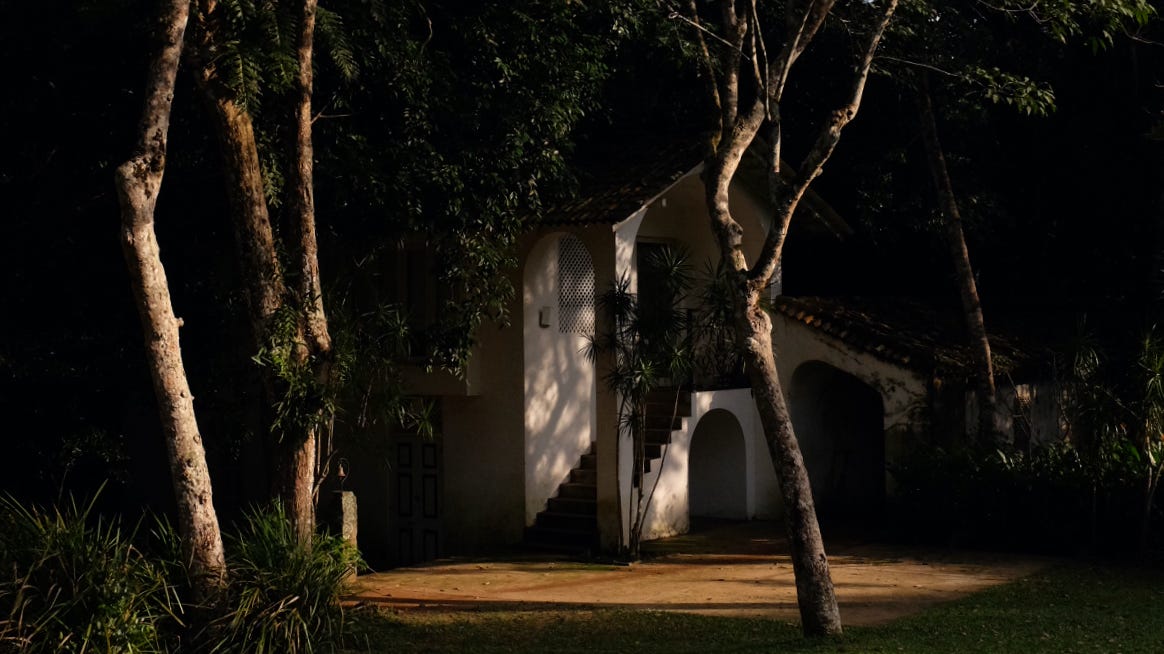STYLE: FORTUNY
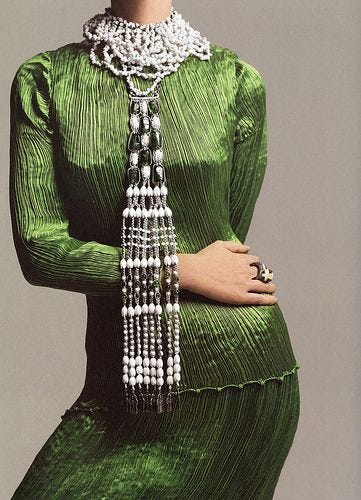

Mariano Fortuny (1871–1949) was a Spanish-born artist, designer, and inventor best known for his innovative creations in textiles, lighting, and set design. His brand, Fortuny, still exists today and tapping into it feels like unlocking a piece of preserved fashion history.
In 1909, Mariano Fortuny created the ‘Delphos’ gown with his wife Henriette Negrin: a dress made in a distinctive pleated silk that came to define the brand. The heavily guarded secret of the pleated fabric would go on to be patented by the house and inspire future designers such as Issey Miyake and Alexander McQueen. The shape and name of the Delphos gown referenced back to the chiton of Ancient Greece.
Maybe no one was more obsessed by the garments than the 80s style icon, model turned jewellery designer, Tina Chow - she became a major collector with 18 originals populating her closet. She allegedly would go to parties in one of her Fortuny gowns and refuse to eat or sit out of preservation purposes.
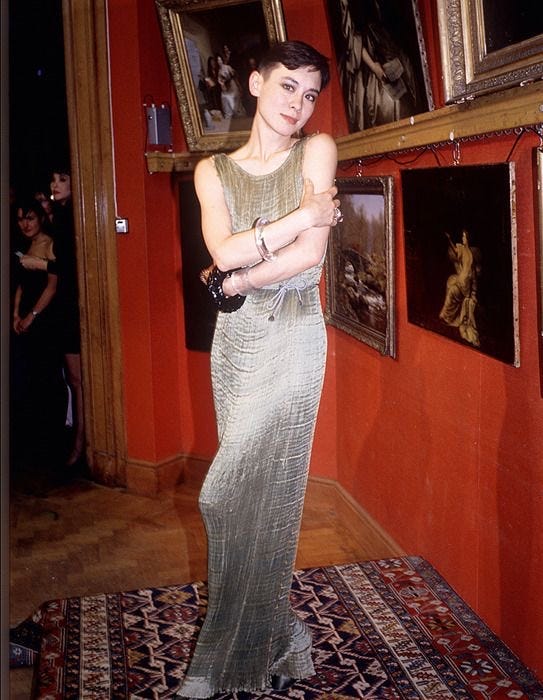
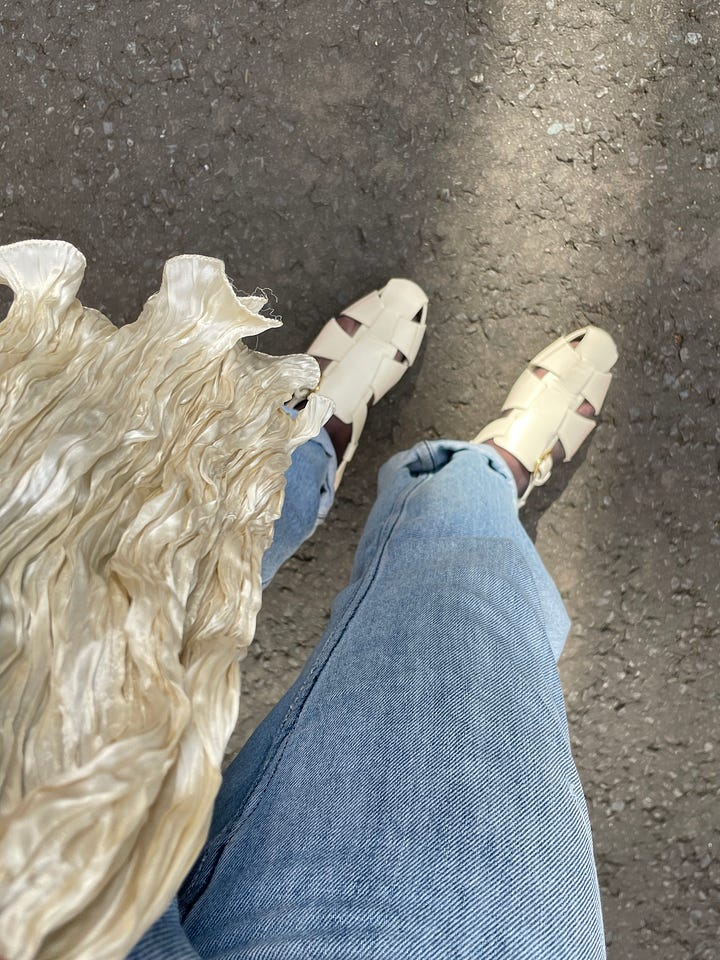
The original gowns are now collectible items (new ones are still available in the Fortuny stores) and we spotted some amazing ones for sale on 1stDibs (though we are scared to think what POA might translate to!). On our side, we are slowly amassing our own collection of the scarves. They are made in the same iconic plissé material as the gowns and are rolled up like little pieces of fusilli on display in store. If you are still itching for pleated pieces, our friends in Marseille, Azur, make modern wardrobe shapes using similar pleating techniques that they execute entirely by hand on silk ethically sourced from India.
KITCHEN: CHEZ JANOU’S MOUSSE AU CHOCOLAT
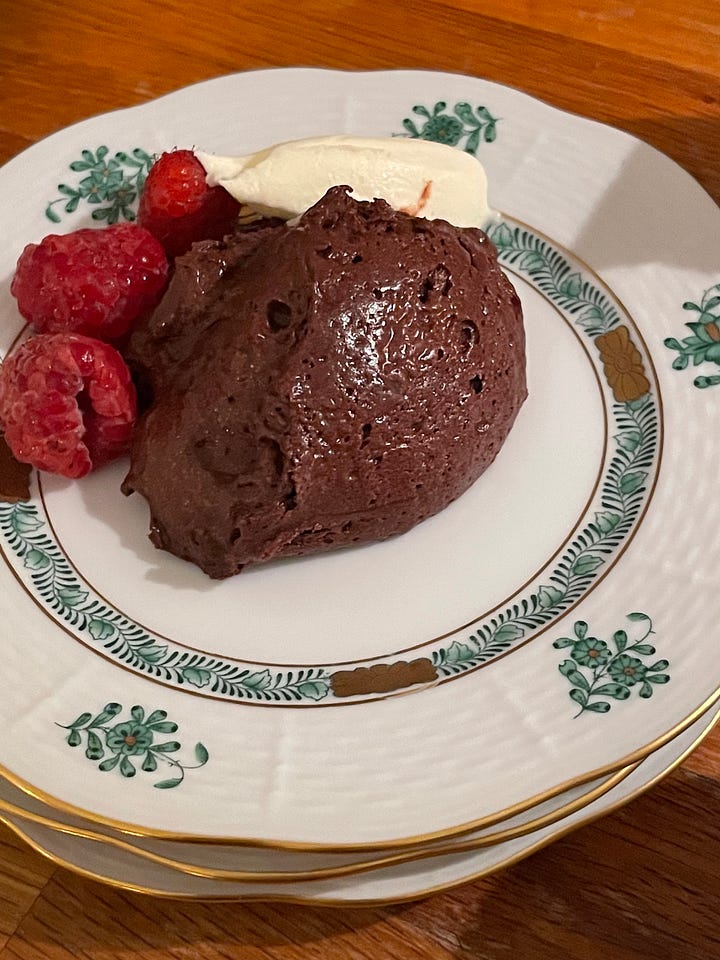
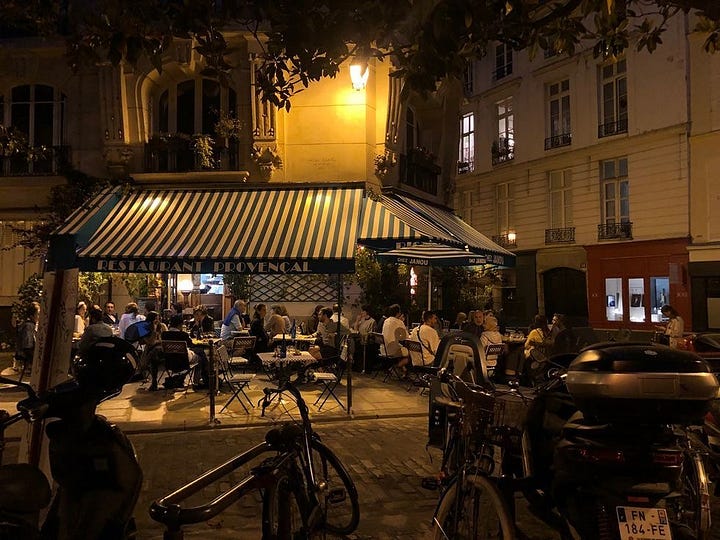
Sharing a ‘romantic’ dessert idea in February might seem timely considering a certain love holiday sits in this month, but in truth we're sharing it because it's an easy-to-make recipe that never fails to impress—a favourite kind of recipe for us.
Chez Janou is a restaurant tucked away on a corner down from the Place des Vosges in Paris, which has gained a following for its quintessential French-ness and its infamous dessert. The mousse arrives table-side in an enormous terrine and your waiter proceeds to serve out spoonfuls until you ask for them to stop. The recipe is closely guarded by the restaurant; simply stating "in mousse we trust". This needs embroidering on a pillow somewhere.
Although Nils, as resident Frenchman, says he had never heard of this restaurant until me so maybe it is just connu by les touristes - regardless it remains an enjoyable stop while in the Marais.
The recipe below is what gets us as close as we can to Chez Janou’s recipe (adapted from the Cordon Bleu cooking school). It makes 4 generous portions. We tripled it recently to serve it Janou style in a huge terrine for all of our friends with crème fraîche, raspberries, and extra sea salt on the side.
Here it goes:
125g dark, good quality chocolate
50g salted butter
20ml Grand Marnier, Whisky, Brandy or any other Liquor you like
4 egg yolks
50g caster sugar
3 egg whites
Melt the chocolate, butter, and alcohol of choice in a bowl over hot, boiling water. The bowl should not touch the water and it shouldn't be too hot. Stir continuously with a spatula.
At the same time, whisk the egg yolks and sugar together for a few minutes until the amount has doubled, the sugar has dissolved and the colour is very light.
When the chocolate is melted, fold it into the egg yolk mixture.
Next, whisk the egg whites until stiff and in three parts (very carefully!) fold them into the chocolate mixture. Make sure to not get rid of too many air bubbles, because they will make the mousse extra airy and soft.
When everything is nicely combined, pour the mousse into a bowl and leave it to set for at least 2-3 hours in the fridge. Add a little sprinkle of sea salt on the top if that's your thing.
ART: GEOFFREY BAWA
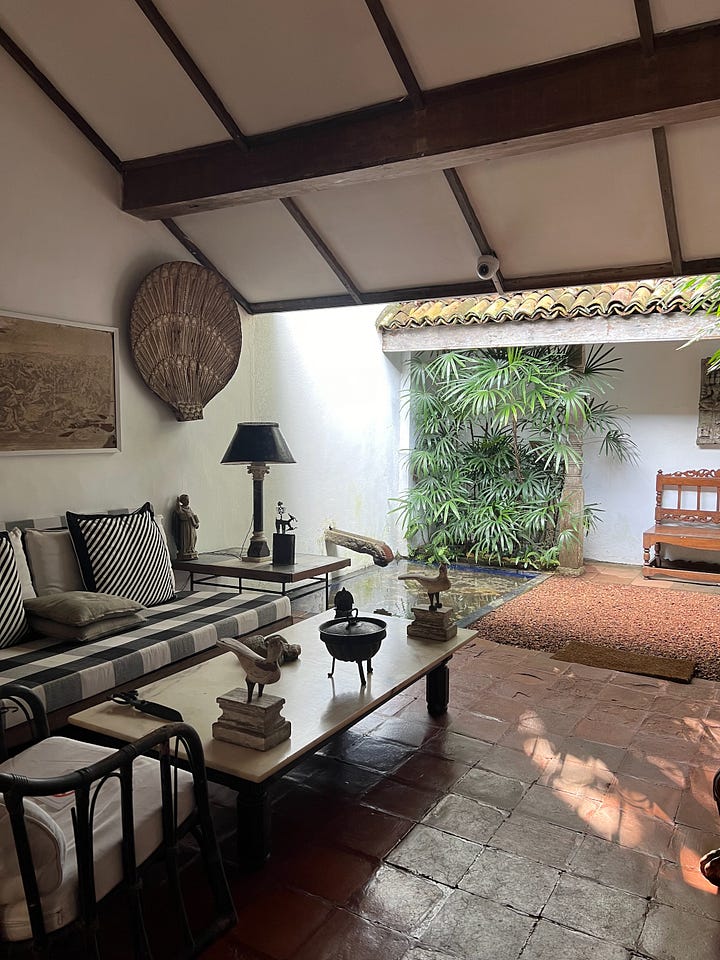
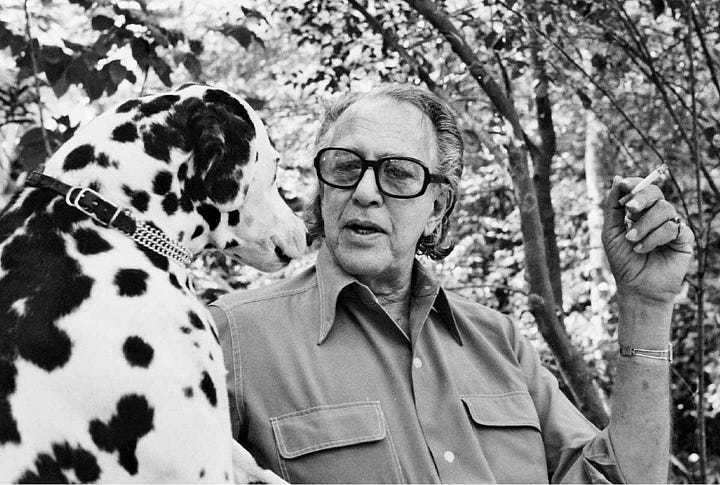
Few architects define a country like Geoffrey Bawa does Sri Lanka.
An embodiment of the country’s history as the crossroads of Europe and Asia, he was born in 1919 of upper-class parents mixing Sinhalese (Sri Lankan) heritage and Old Continent roots. Educated first as a lawyer in England, he spent several years traveling across Europe and the world at large until eventually returning to his native island in 1948. It was not until his mid-30s that he decided to study architecture. Throughout his career, he worked on a diverse range of projects, including private residences, hotels, public buildings, and landscapes until passing away in 2003.
In our recent trip to the island, we were fortunate to spend time in two of his most special buildings: his personal houses - namely his town house in Colombo, the capital; and his country estate Lunuganga, about 1.5 hours south.
We started our trip in the Sri Lankan capital with a stay in what is often referred to as ‘Number 11’ - the address of the building, nested at the very end of an otherwise nondescript street. The house began as a modest bungalow when Bawa acquired it in 1959; but evolved into a remarkable architectural marvel over eight years. Bawa gradually acquired neighbouring plots of land, amalgamating them into a single, innovative dwelling. The house is now part of his Trust since his death; and is effectively a museum open to the public with daily tours. The trick is that the upstairs level (where the guest suite is housed) is available to rent! That’s where we spent Christmas eve, and how special it was to be among his legacy.
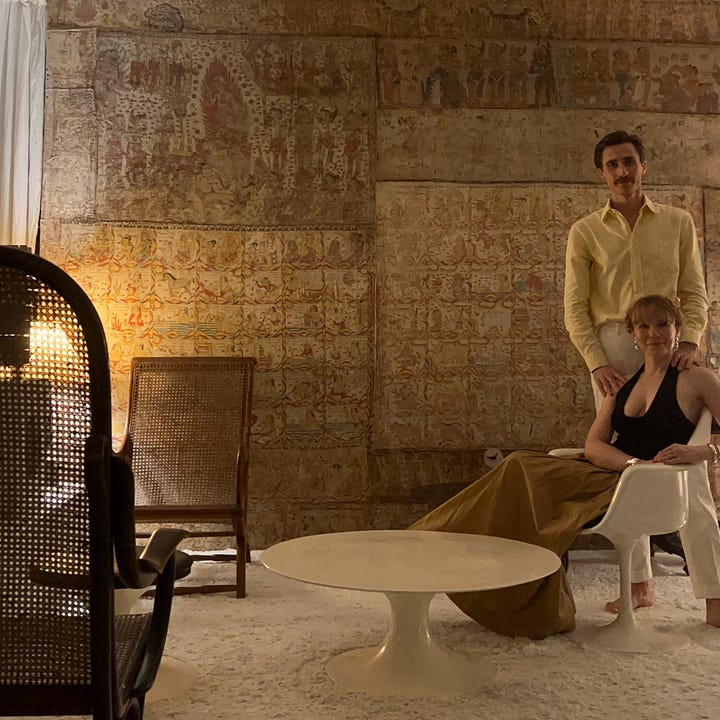

The walls of the house are adorned with art collected throughout his life and salvaged architectural elements. The furniture mixes indigenous dark woods with mid-century modern pieces (think Saarinen’s Tulip chairs). Beyond the natural world, surprisingly little colour is to be found in his interiors: the man loved everything black & white - all the way to his own dog, a Dalmatian called Leopold.
His designs often feature open-air courtyards, verandas, and fluid transitions between indoor and outdoor spaces, blurring the boundaries between the built environment and the natural world. He came to define ‘tropical modernism’ which sought to create environments that embraced the lush landscapes of the island nation. He envisioned buildings that respected the environment, with structures that seemed to emerge organically from the landscape rather than impose upon it. This is the segue to the second place, Lunuganga; his “garden within a larger garden”.
For over 40 years, he transformed what was originally a former colonial cinnamon and rubber plantation into a lush garden, altering the landscape by reducing hill heights, adding levels, and incorporating water features. Sculptures and pottery are strategically positioned amidst the trees, creating intentional arrangements to highlight focal points within each scene. Over the years, he dotted multiple structures around the estate. Part of his Trust, the estate is now managed as a hotel, where we were fortunate to stay. Rooted in the essence of Sri Lanka, Lunuganga certainly is one of the most spectacular locations we’ve ever experienced.
TRAVEL: CULINARY HIGHLIGHTS OF ANTWERP
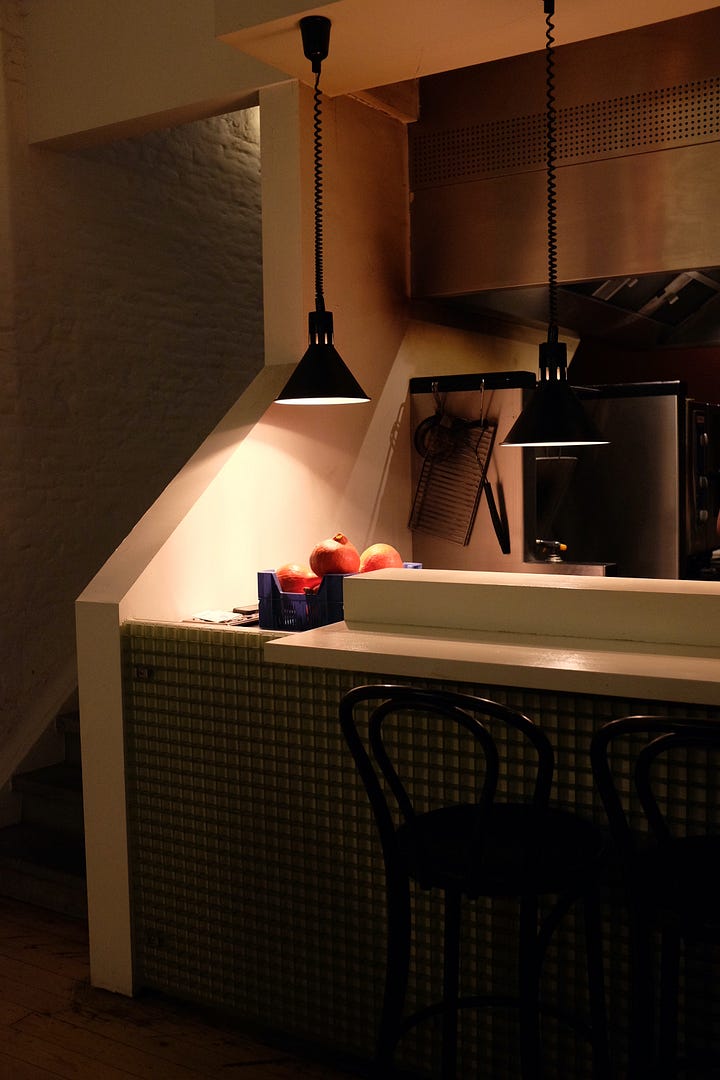
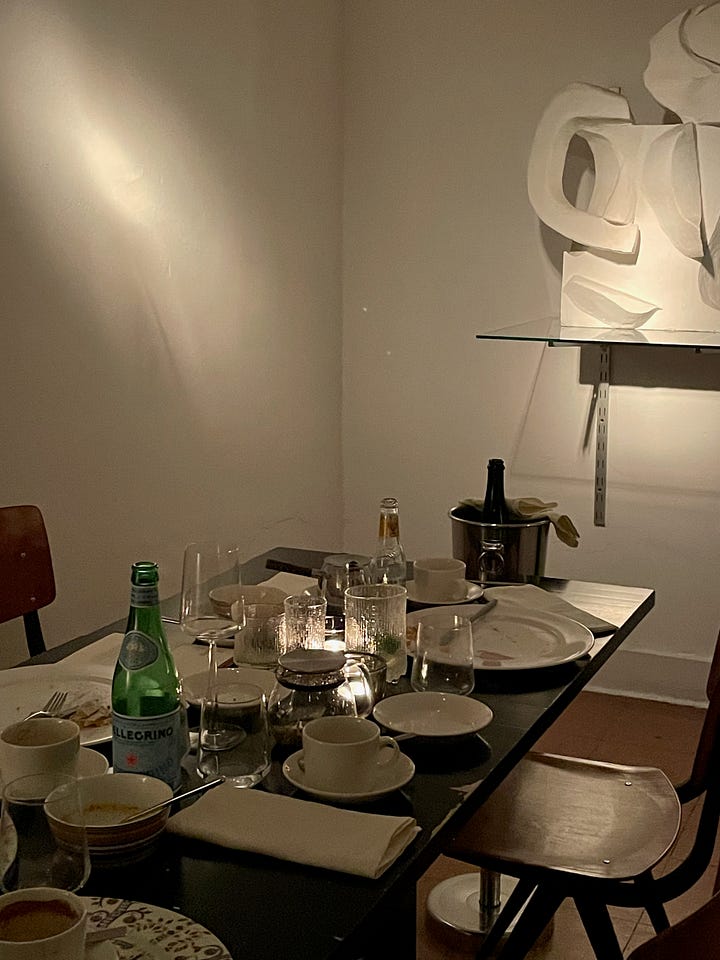
We travelled to Anwerp for Nils’ birthday and were amazed by how many incredible meals we ate/drank, so we collated a few addresses quickly here.
Victor - Our favourite meal of Antwerp. It’s a female-run restaurant (chefs, staff) and was recommended by the Dries Van Noten team that go often. Seasonal plates were actually large (rare!) and we washed it all down with a full-bodied white 2019 Furmint Sagmeister from Serbia.
Normo - Coffee!
Camino - We inhaled this meal. Not sure if it was influenced by the boatloads of wine we had before at Titulus (around the corner) but we do remember the Asian noodles being delicious.
Album - The guys are doing amazing things; the atmosphere is chic and warm with yummy looking bread to takeaway.
Le John - Kind of scene-y but came recommended by friends. The food is Italianesque (not the most original menu as we often can, and do, grab a burrata at home in London), but the design and art dotted around make a great atmosphere.
Cafe Kulminator - We stumbled upon this place before quickly realising it is actually a beer Mecca for which people literally come from all over the world to visit. Scarcely anywhere else will you find more rare beers in one place: think of a menu with specific vintages to choose from for hundreds of beers. It is worth going in to just see - if you can convince the old Belgian couple running it to open their door to you that is!


